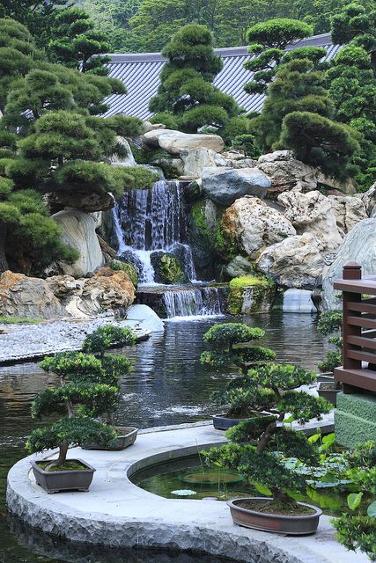Welcome to Bonsai Empire

The Basic
Most people started growing bonsai after buying a tree in an (online) shop. Though this is without doubt a nice way to get started, it might be more interesting (and less expensive) to grow and style a tree yourself.
Don't let the fact that 'bon-sai' is an art studied and refined for centuries scare you off, because you are perfectly capable to learn how to grow bonsai trees without green thumbs. Make sure to pick the right tree species for your environment and stick to the basic care guidelines.
In this article I'll explain how to get started with growing Bonsais and introduce you into the three main parts of this section: Bonsai cultivation, styling and care. The movie just below will help you understand the basics, read on for more detailed information!
History
Shallow basins or flattened bowls – “pen” or “pan” or “pun” – had been made out of earthenware in what we now call China since about 5,000 years ago. A thousand years later during the Chinese Bronze Age, these were among the chosen shapes to be recreated in bronze for religious and political ceremonial purposes. About 2,300 years ago, the Chinese Five Agents Theory (water, fire, wood, metal, and earth) spun off the idea of the potency of replicas in miniature. By recreating a mountain, for example, on a reduced scale, a student could focus on its magical properties and gain access to them. The further the reproduction was in size from the original, the more magically potent it was likely to be. Two hundred years later, importations of new aromatics and incenses took place under the Han Emperor because of newly opened trading with its neighbors. A new type of vessel was created, incense burners in the form of the mountain peaks which rose above the waves and symbolized the abodes of the Immortals, the then-popular idea of the mythic Islands of the Blessed. Primarily crafted out of bronze, ceramic or gilded bronze, some of these burners rested on small pen dishes to either catch hot embers or to hold a miniature symbolic ocean. The removable lids to these burners often were covered in stylized portrayals of legendary figures climbing the sides of forested hills. From the perforations in the lids the incense smoke arose out of the cave openings like the mystic vapors in the full-size mountains. It is thought that some later lids made out of stone may have been found with lichens or moss already attached – natural miniature landscapes.
From about the year 706 AD comes the tomb paintings for Crown Prince Zhang Huai which included depictions of two ladies-in-waiting offering miniature rockery landscapes with small plants in shallow dishes. By this time there were the earliest written descriptions of these pun wan – tray playthings. As the creation and care of these was somewhat already advanced, the maturation of the art had taken place (but its documentation has not yet been discovered by us).
The earliest collected and then containerized trees are believed to have been peculiarly-shaped and twisted specimens from the wilds. These were “sacred” as opposed to “profane” because the trees could not be used for any practical, ordinary purposes such as lumber. Their grotesque forms were reminiscent of yoga-type postures which repeatedly bent-back on themselves, re-circulating vital fluids and said to be the cause of long-life.
Over the centuries, different regional styles would be developed throughout the large country with its many varied landscapes; earthenware and ceramic containers would replace the porcelain ones displayed on wooden stands; and attempts would be made to shape the trees with bamboo frameworks or brass wire or lead strips. Many poets and writers each made at least one description of tree and/or mountainous miniature landscapes, and many painters included a dwarfed potted tree as a symbol of a cultivated man's lifestyle. After the 16th century these were called pun tsai or “tray planting.” The term pun ching ("tray landscape," now called penjing) didn't actually come into usage until the 17th century.